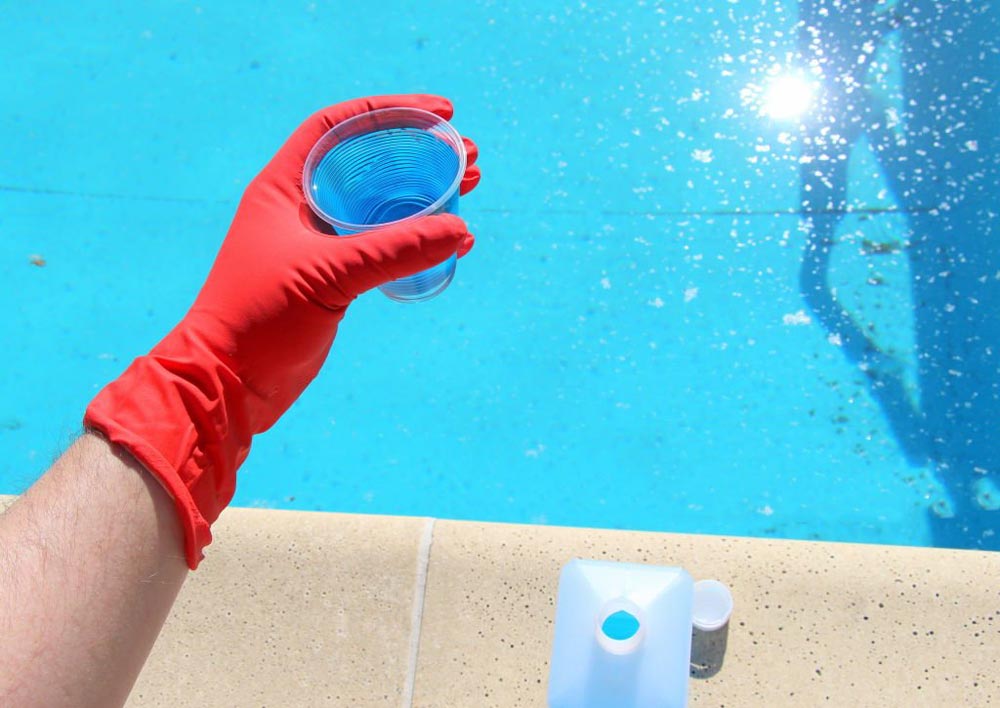Algicideke ntho ea bohlokoa ea lik'hemik'hale bakeng sa ho hloekisa metsi a letamo la ho sesa le tlhokomelo ea mefuta e sa tšoaneng ea metsi. Empa ka tšebeliso ea eona e atileng, batho ba se ba qalile ho ela hloko tšusumetso e ka bang teng 'meleng oa motho. Sengoliloeng sena se tla hlahloba ka botebo likarolo tsa ts'ebeliso, ts'ebetso ea ts'ebetso, mochini oa "sterilization" oa Algicide, le phello ea ona ho boleng ba metsi, haholo 'meleng oa motho.
Libaka tsa kopo
Li-algicides li sebelisoa haholo libakeng tse fapaneng tsa metsi joalo ka matamo a ho sesa a lelapa, matamo a ho sesa a sechaba, libaka tsa ho bapala tsa metsi le libaka tsa khoebo tsa metsing. Hang ha boleng ba metsi libakeng tsena bo silafalitsoe ke bolele le likokoana-hloko tse ling, bo ke ke ba ama feela ponahalo ea metsi empa hape bo tla hlahisa monko o sa thabiseng. Ka hona, tšebeliso ea Algicide e ka laola kholo ea algae ka katleho le ho boloka bohloeki le bophelo bo botle ba boleng ba metsi.
Mokhoa oa ts'ebetso le oa ho thibela likokoana-hloko
Mosebetsi o ka sehloohong oa li-algicides ke ho thibela ho hōla ha algae. Lihlahisoa tse fapaneng tsa algaecide li na le mekhoa e fapaneng ea ts'ebetso. Ka kakaretso, ba hloka ho ikopanya le ho kenya lisele tsa algae, ebe ba thibela limatlafatsi tse hlokoang ke algae kapa ho senya marako a lisele tsa bona, kahoo ba finyella morero oa ho laola kapa ho bolaea algae. Algicide e 'ngoe e tsoetseng pele e boetse e na le mesebetsi e meng e kang ho ntlafatsa botsitso ba tikoloho ea metsi le ho eketsa pepeneneng ea metsi. Le hoja algaecides e ke ke ea felisa litšila, li ka thibela bolele hore bo se ke ba ata sebakeng se seholo.
Tšusumetso ho boleng ba metsi
Tšebeliso ea li-algicides e ka ntlafatsa boleng ba metsi ka katleho le ho fokotsa kholo ea algae le likokoana-hloko tse ling. Sena se ke ke sa ntlafatsa feela phello ea pono ea 'mele oa metsi, empa hape se fokotsa monko, se etsa hore' mele oa metsi o khatholle le o monate. Leha ho le joalo, tšebeliso ea nako e telele kapa e feteletseng ea li-algicides e ka ba le liphello tse mpe holim'a metsi, joalo ka ho senya botsitso ba tikoloho ea 'mele oa metsi kapa ho etsa hore algae e hanane le lithibela-mafu.
Phello 'meleng oa motho
Ho pepeseha ha nako e telele ho metsoako e itseng ea algicide ho ka ba le liphello tse itseng bophelong ba motho, joalo ka ho teneha ha letlalo, ho se thabise ho hema, joalo-joalo. Ho khothalletsoa hore ka mor'a ho eketsa Algicide letamong la ho sesa, emela metsotso e ka bang 15-30 hore Algicide e kopane ka ho feletseng le metsi pele u sebelisa letamo la ho sesa ho qoba ho baka kotsi ho 'mele ea motho.
Litlhokomelo le tšebeliso ea sehlahisoa
Ha u sebelisa li-algicides, u lokela ho qala ka ho bala tlhaloso ea sehlahisoa ka botlalo ho utloisisa ts'ebeliso ea sona le mehato ea ts'ireletso. Ka nako e ts'oanang, etsa bonnete ba hore u e sebelisa sebakeng se nang le moea o motle 'me u apare lisebelisoa tse loketseng tsa tšireletso, tse kang likhalase tse sireletsang lik'hemik'hale, li-gloves tse sireletsang lik'hemik'hale, joalo-joalo Hopola hore u se ke ua ja kapa ua tsuba ha u ntse u sebelisa algaecide ho qoba ho ja ka phoso.
Khetha lihlahisoa tsa boleng bo holimo tsa Algicide
E le ho netefatsa phello ea phekolo ea metsi le bophelo bo botle ba batho, ho kgothaletswa ho khetha lihlahisoa tsa boleng bo phahameng ba Algicide. Hangata lihlahisoa tsena li sebelisa mekhoa e metle ea tikoloho, e nang le chefo e tlaase e ka thibelang kholo ea algae ka katleho le ho ba le tšusumetso e fokolang 'meleng oa motho. Khamphani ea rona e hlahisa mefuta e mengata ea lihlahisoa tsa Algicide, ho kenyelletsa le Super Algicide, Strong Algicide, Quater Algicide, le Blue Algicide (Long-Lasting). Super Algicide and Strong Algicideproducts ha e na chefo ebile ha e tenehe, e ke ke ea baka foam le moriri o motala, 'me e lumellana le maemo a fapaneng a metsi, joalo ka metsi a acidic, metsi a alkaline le metsi a thata. Ka kopo, tobetsa webosaeteng ea rona ea semmuso ho fumana lintlha.
Algaecide ke ntho ea bohlokoa haholokhemikhale ea letamo la ho sesae sireletsang boleng ba metsi a letamo la hau. Algicide ke sesebelisoa sa bohlokoa bakeng sa ho hloekisa metsi a letamo la ho sesa le ho boloka 'mele oa metsi. E ka ntlafatsa boleng ba metsi ka nepo ha e sebelisoa ka nepo. Leha ho le joalo, liphello tsa eona ’meleng oa motho li ntse li hloka lipatlisiso le tlhokomelo e eketsehileng. Ka hona, ha u sebelisa Algicide, etsa bonnete ba hore u latela litaelo tsa sehlahisoa le likhothaletso tsa litsebi le ho nka mehato e nepahetseng ea ts'ireletso ho netefatsa boleng ba metsi le bophelo bo botle ba batho.
Nako ea poso: Oct-11-2024


